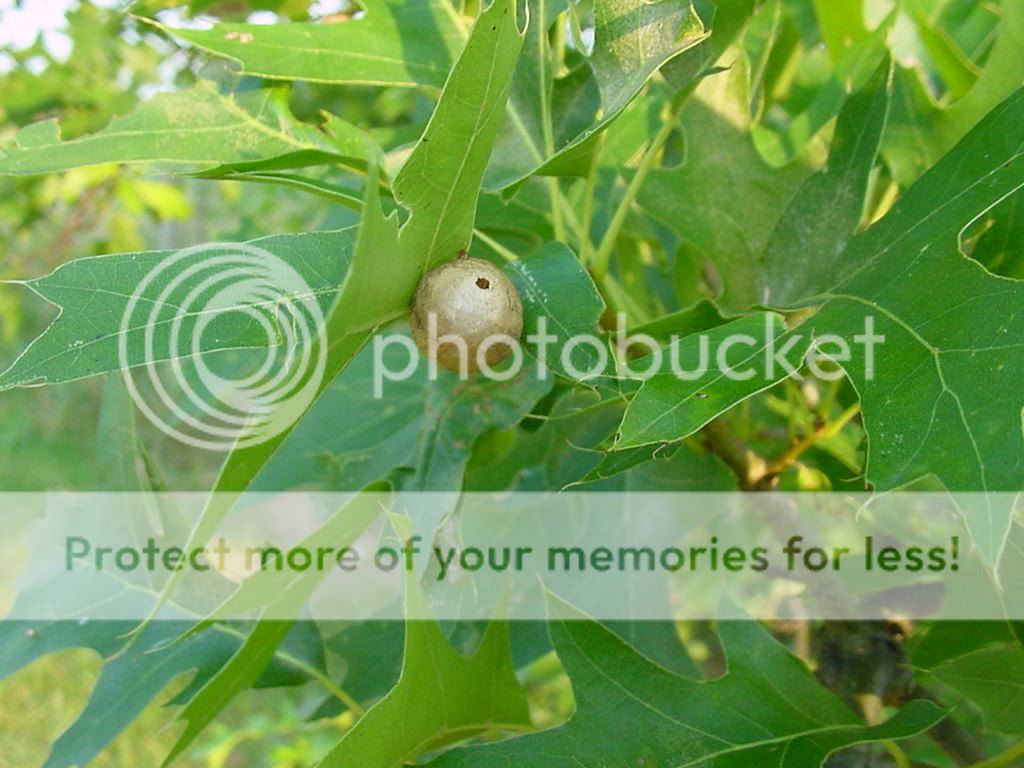These things are fun. I remember seeing them as a kid at a place my family used to take our boat called Westport, a city in Washington, I believe. Or maybe it was Eastport. Anyway, there were hundreds of them beneath each huge oak tree and more in the tree itself. They were fun to step on since they were hollow with a sort of satisfying crunch as would be produced by a hollow chicken egg. They were too light to make good projectiles, however (there were a number of other boys my age in the boat club). They were a pale tan usually with red spots, but sometimes greenish (memory may have faded some on the latter). If opened carefully there was a small, central mass. Between this mass and the outer shell were radial "hairs" that hardly provided structure during this dead phase of the (fallen) oak goal, but which I assume provided structure and transport to the shell during the growing phase. As I understood it, the gall itself is an allergic reaction to the oviposition of an egg into a plant's tissue. The gall grows and a single larva of one of these wasps has a very cozy place to feed and grow. (correct me if I'm wrong) Picked directly off the tree, instead of the ground, you can often find the still-living, pale larva inside that central mass.
Ten years ago I found the galls of another species of gall wasp or oak (Quercus sp.), or more likely both. These were larger, maybe 2.5 inches in diameter, woody and very hard to break open.
Finally, a few years back, a friend showed me some galls from California that measured 1/8 inch. Like Mexican jumping beans, they would jump if disturbed! He kept around a hundred of them in a lidded petri dish so that when one jumped it would set off a chain reaction and they'd all burst into antics.
The wasps of all these galls are quite small as evidenced by sightings and the small holes through which they somehow chew(?) out to emerge.






